Description: Members of Family Goniasteridae have prominent marginal plates along the edges of the 5 rays, the plates (paxillae) on the aboral surface are flattened (tabulate) or have stout spines. The superomarginal plates are approximately in line with the inferomarginal plates and shaped similarly to them, and the animals are nearly pentagonal to star-shaped. Papulae are present only on the rays, and the tube feet have suckers. Members of genus Hippasteria have spines (occasionally spinelets) on the abactinal, marginal, and actinal plates. They have secondary (smaller) plates around the primary plates. The marginal plates are bare or sometimes partly covered by spinelets, rounded or angular granules. The spines are usually thick and rounded but sometimes compressed. The spines at the inter-radius are equidastant and quadrate to ovaloid in shape. The 2-3 (4) furrow spines per plate are large and round in cross section and have smooth, blunt tips. The pedicellariae are large, bivalved, and sit on the center of their plates. The central disk is large, stout, heavily calcified, with short, triangular rays. Hippasteria phrygiana has a large central disk and 5 rapidly tapering rays which are about as long or less as the central disk is wide. It has numerous large (up to 2 mm across, photo), unstalked pedicellariae on secondary (smaller) plates of both the oral and aboral surfaces (oral photo)(aboral photo). The pedicellariae are about 2 mm wide, have smooth valves, and are often wider than they are tall (photo). All plates are surrounded by small granules (photo) which are not angular. Large marginal plates, each with 2 large spines (only 1 at the tip of the ray), line the edges of the rays (photo). These plates and are quadrate to circular (not oval), clearly visible from the aboral side and the spines are so prominent that they give a spiny silhouette to the seastar. The ambulacral grooves are also edged by adambulacral plates, each of which has 3 stout spines: 2 (furrow spines, blunt with rounded tips) facing the ambulacral groove and 1 projecting orally (photo) but have no pedicellariae. The mouth plates have 4-5 marginal spines. The aboral (abactinal) surface is orange to vermilion, with spines bearing elongated, cylindrical spines with blunt tips and projecting 1 to 4 cm above the surface. The oral (actinal) surface is lighter orange, cream colored, or white. Diameter up to 34 cm.
Note: This is a very widespread and variable species, which molecular analysis has shown to include a long list of former, mostly deep-sea species. The description above is an attempt to list the features most common in the NE Pacific, but some members of the species vary from this description. For a more thorough description consult Mah et al., 2014. The species here in the NE Pacific was called H. spinosa until the molecular study of Mah et al., 2014.
How to Distinguish from Similar Local Species: This species is distinctive from virtually any other local species.Ctenodiscus crispatus has a gray or yellow aboral surface and no aboral pedicellariae. Luidia foliata is smoother and has marginal plates not large enough to be seen from the aboral side, plus its rays are much longer than its central disk is wide. A few specimens collected in the NE Pacific have grouped molecularly with H. californicus.
Geographical Range: Very widespread, mainly in the deep sea (bathyal): Japan, Alaska to southern California; New Zealand, Solomon Islands, Straits of Magellan; southern Indian Ocean; North Atlantic; Argentina, South Africa.
Depth Range: Mostly bathyal, occasionally subtidal, 10-1405 m depth; mostly >500 m in most of the world but common below 100 m and as shallow as 10 m in the NE Pacific
Habitat: On sand, mud, shell, and rock. This individual was found on a steep silty slope at 25 m depth
Biology/Natural
History: This species
feeds primarily on sea pens such as Ptilosarcus
gurneyi but will also eat Metridium
farcimen or zoanthids such as Epizoanthus
scotinus, tunicates (Metandrocarpa),Nereis
worms, and Armina
californica eggs. The species seems to
breed from May
to July and produces larvae which do not feed.
The key says that this species has bivalved, unstalked pedicellariae.
That is true, but on this individual at least there are also trivalved,
unstalked pedicellariae
(photo)(photo).
This may be another example of how variable this species is.
| Return to: | |||
| Main Page | Alphabetic Index | Systematic Index | Glossary |
References:
Dichotomous Keys:Kozloff, 1987, 1996 (as Hippasteria spinosa)
General References:
Harbo,
2011 (as Hippasteria
spinosa)
Lamb
and Hanby, 2005 (as Hippasteria
spinosa)
Lambert,
2000 (as Hippasteria
spinosa)
Scientific Articles:
Foltz, D.W., S.D. Fatland, M. Eleaume, K. Markello, K.L. Howell, K.
Neill, and C.L. Mah, 2013. Global population divergence of the sea starHippasteria
phrygiana corresponds to the onset of the last glacial
period of
the Pleistocene. Marine Biology 160: pp 1285-1296
Mah, Christopher, Kate Neill, Mark Eleaume, and David Foltz, 2014. New species and global revision of Hippasteria (Hippasterinae: Goniasteridae; Asteroidea; Echinodermata) Zoological Journal of the Linnean Society 171: pp 422-456
Web sites:
General Notes and Observations: Locations, abundances, unusual behaviors:
There were no Ptilosarcus gurneyi
and only a few Metridium
farcimen
anemones and Epizoanthus
scotinus zoanthids visible anywhere around where I
encountered
this seastar at "The Fingers" dive site at Possession Point, southern
Whidbey
Island. However, many individuals of a small, as-yet-unidentified-by-me
sea pen were present in the area.
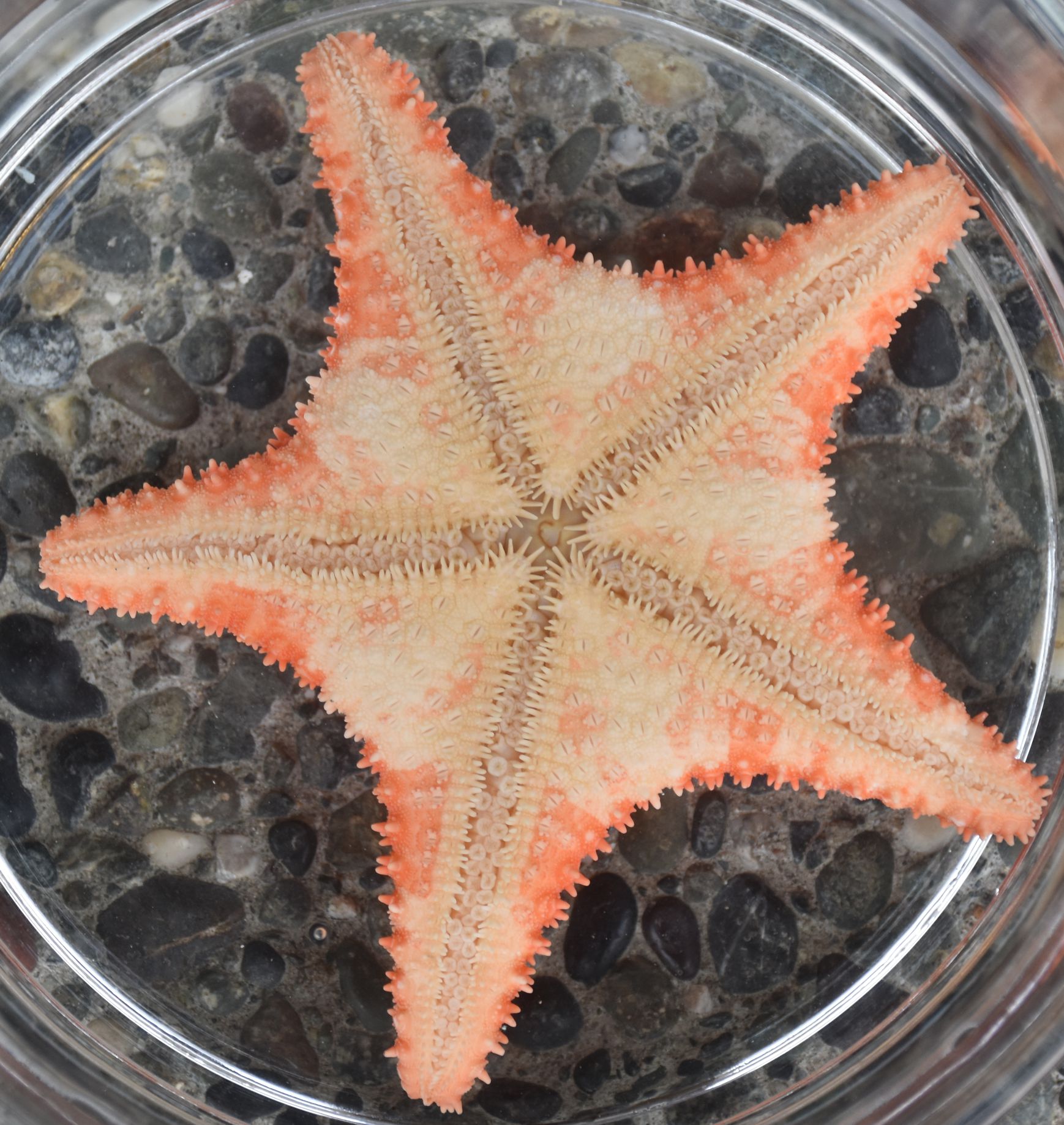
Oral
(actinal)
view of the same individual. Note the large, bivalved pedicellariae.
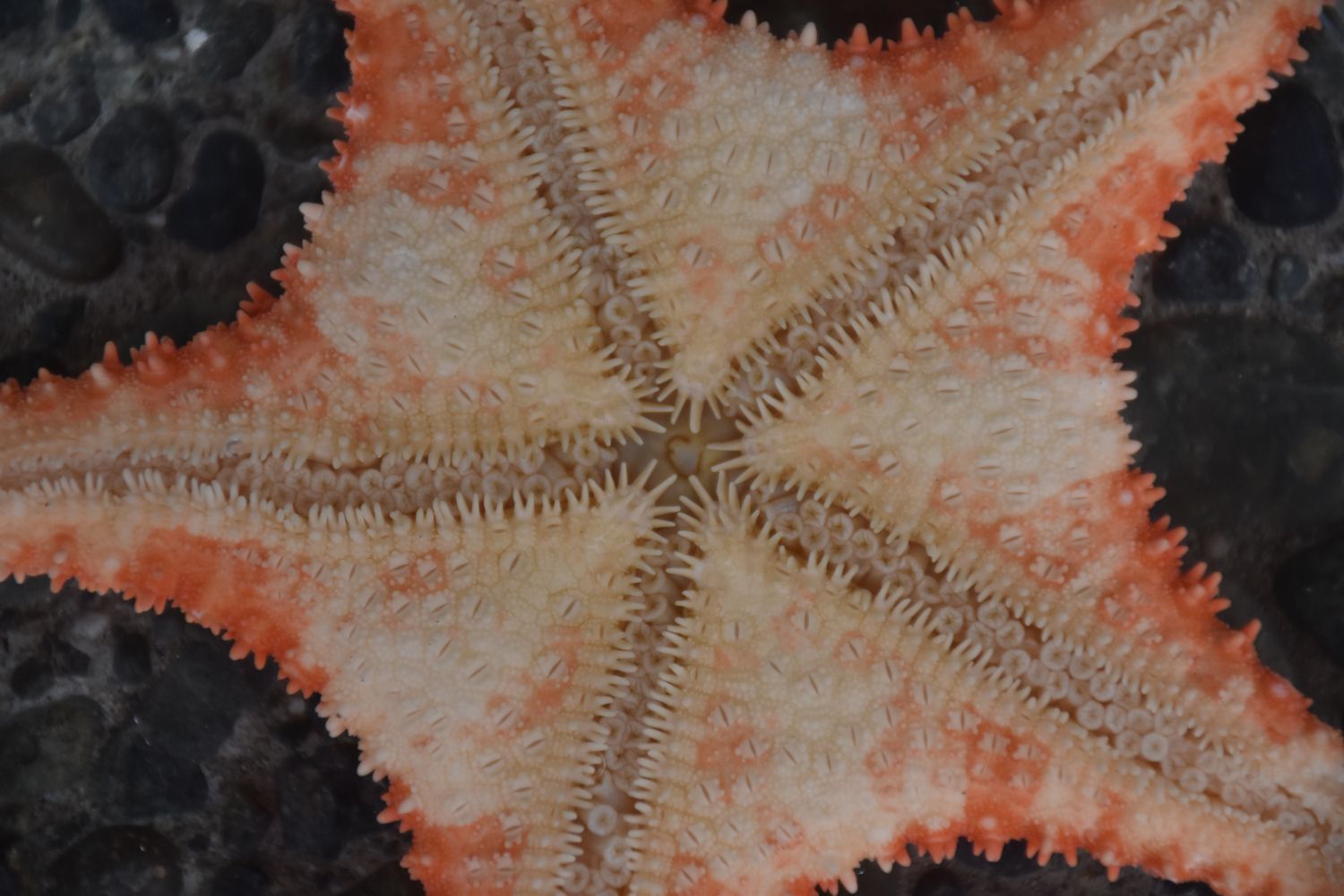
A closer view of the oral
side.
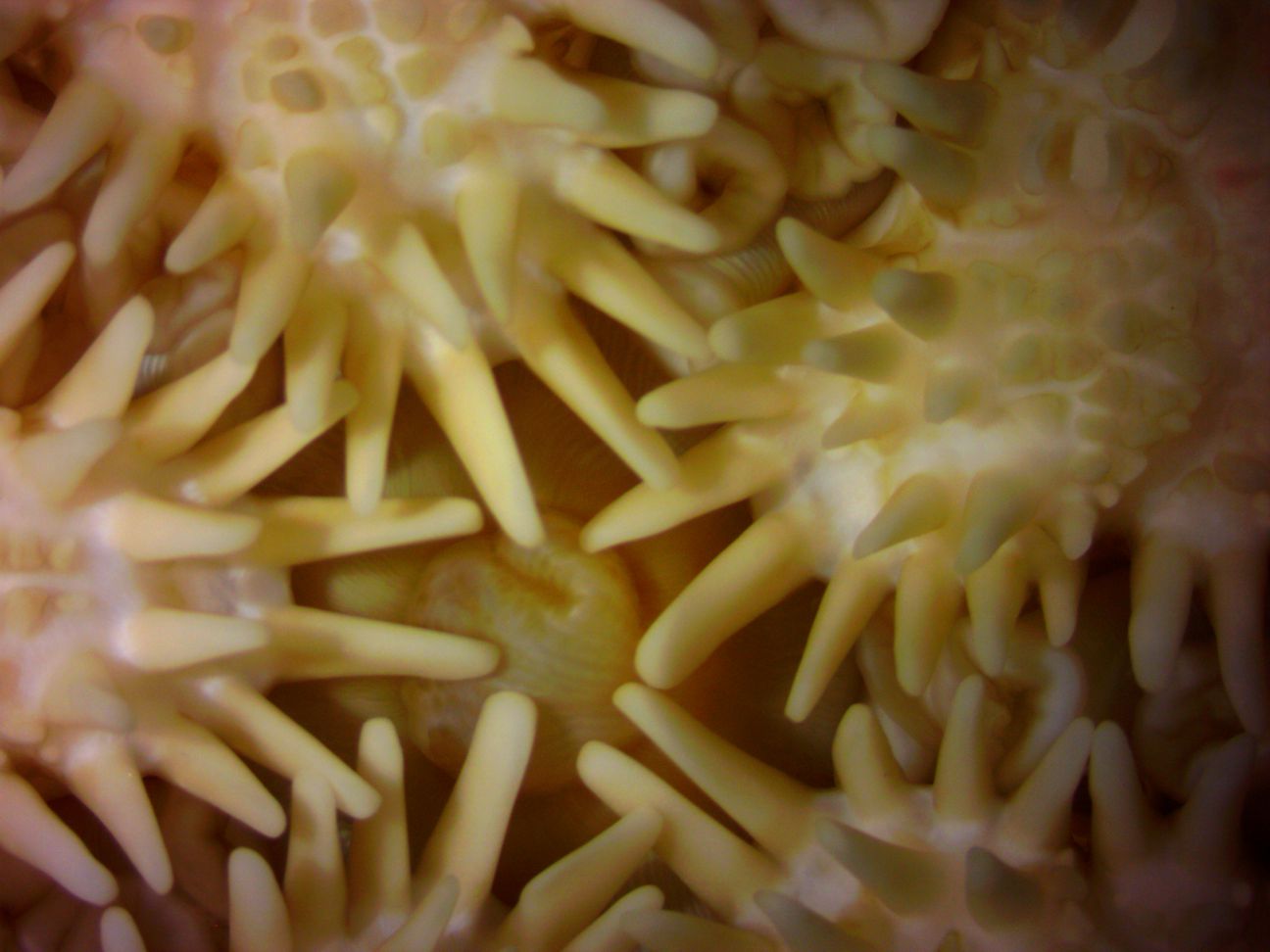
Closeup of the mouth, showing the mouth plates with their 4-5 marginal
spines. The eversible
stomach can be seen inside.
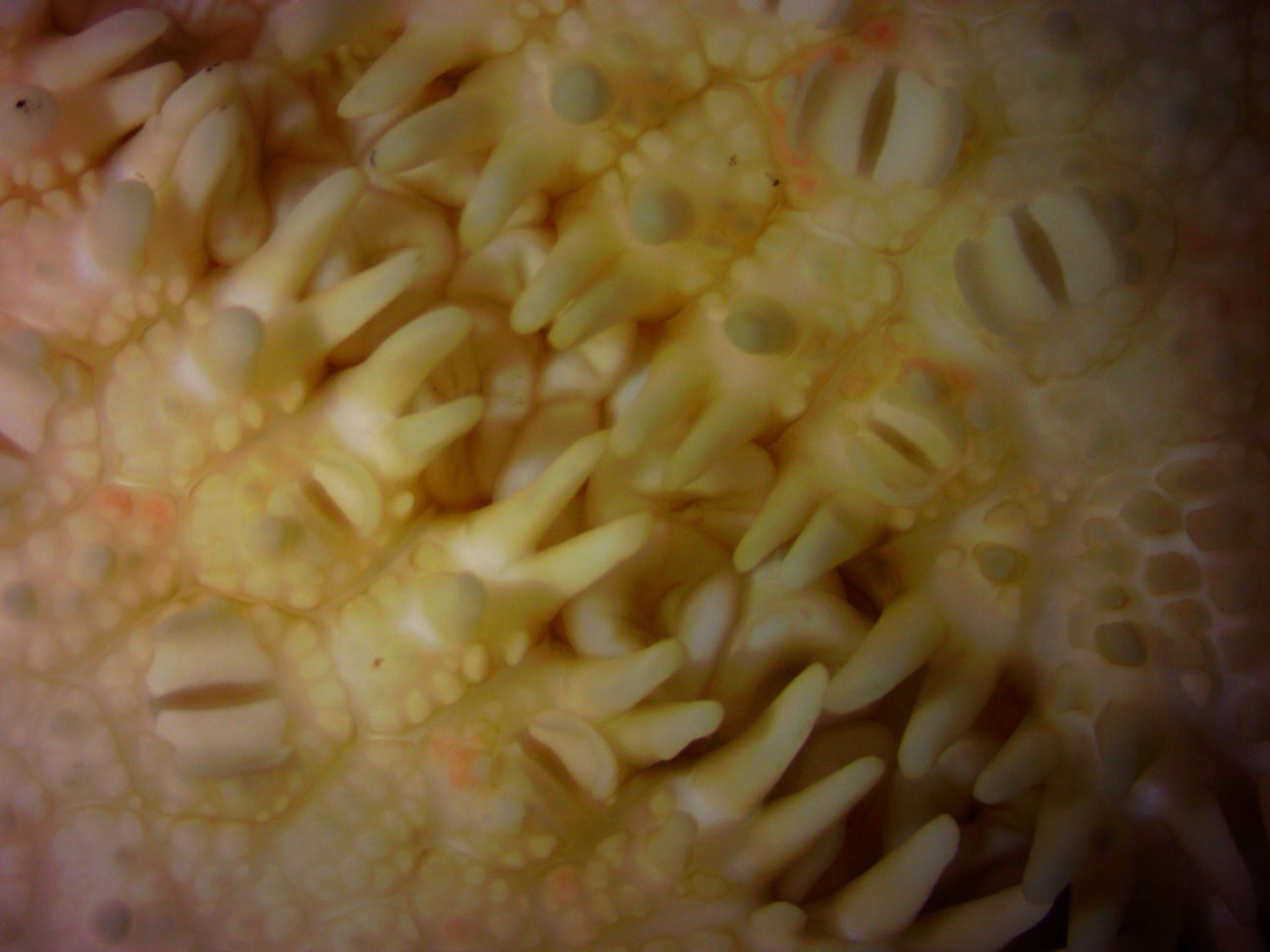
This view of the ambulacral
groove shows a closeup of the adambulacral
spines, each with 2 furrow
spines projecting over the ambulacral
groove and 1 spine projecting orally (toward the viewer in
this photo).
Note also the tube feet with suction-cup ends visible within the ambulacral
groove.

A closeup of the madreporite
and abundant unstalked pedicellariae
on the aboral
(abactinal)
side. The pedicellariae
are up to about 2 mm wide and wider than tall. The scale marks are 1
mm.
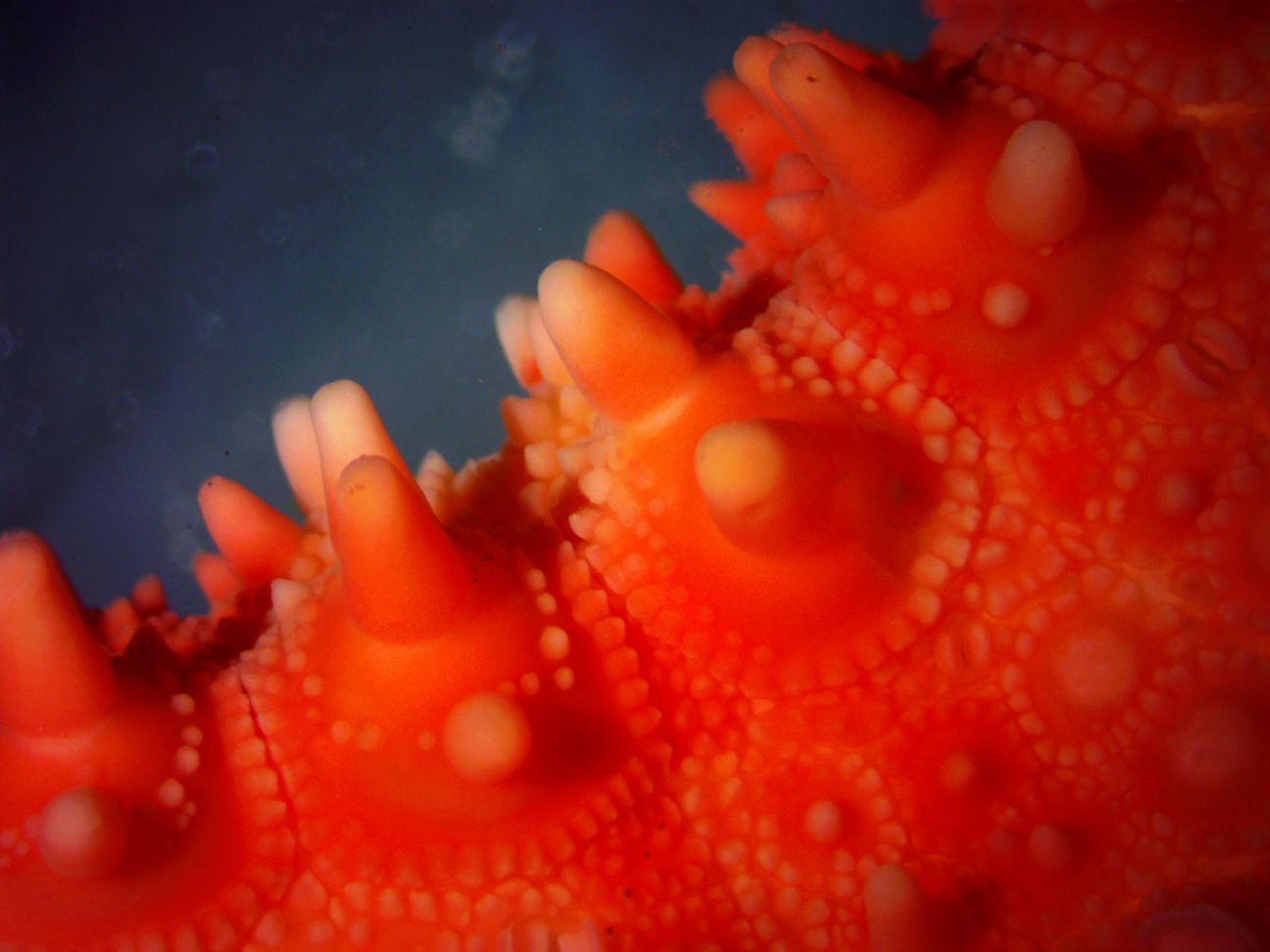
This stacked photo shows the prominent marginal
plates with their tall, round-ended spines with a circular
cross-section.
Note also the small, mostly rounded secondary plates forming rings
around
the primary plates.
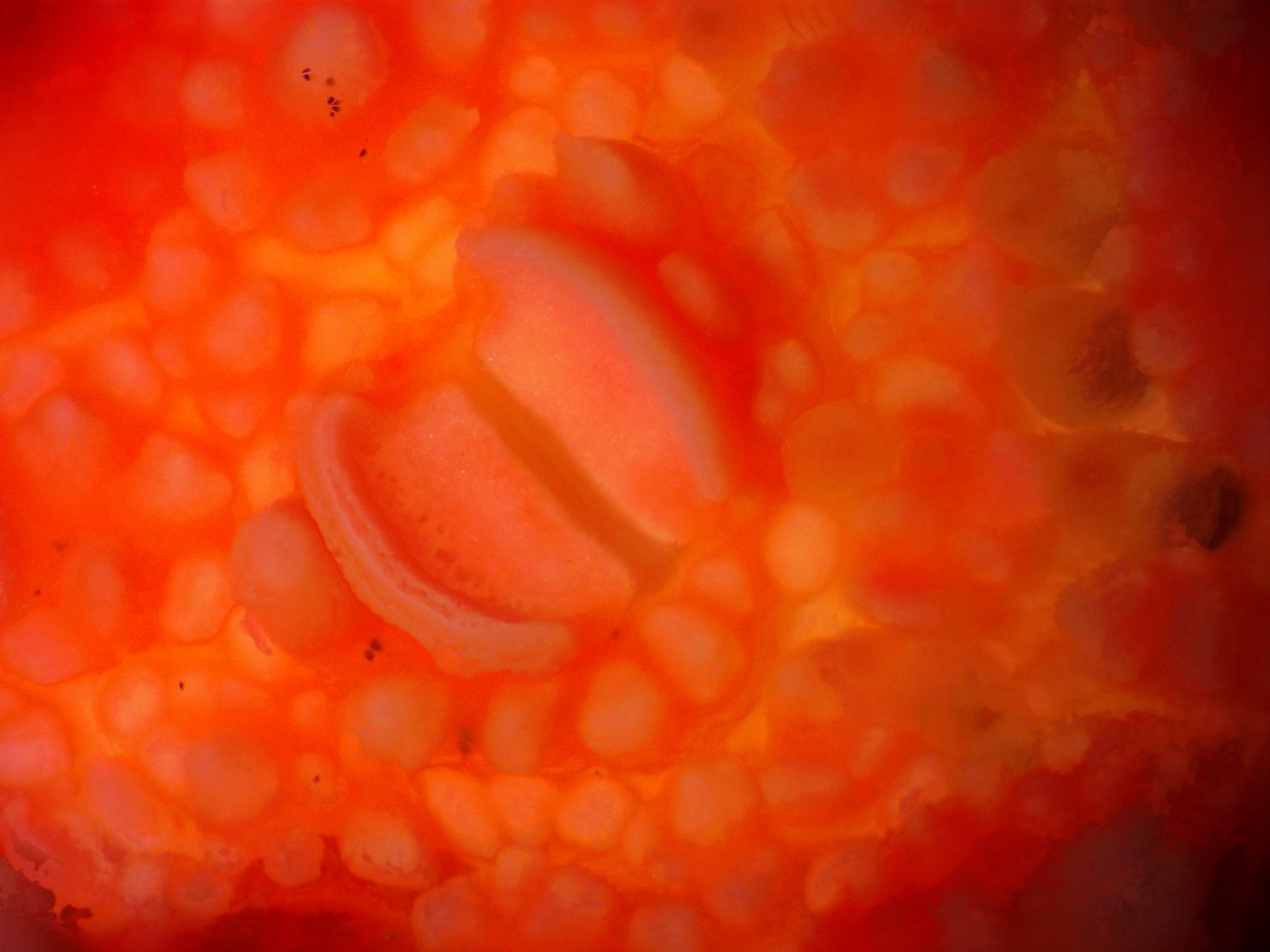
This stacked photo is a closeup of one of the aboral
pedicellariae.
Note the smooth (not toothed) rim. Width is 2 mm.
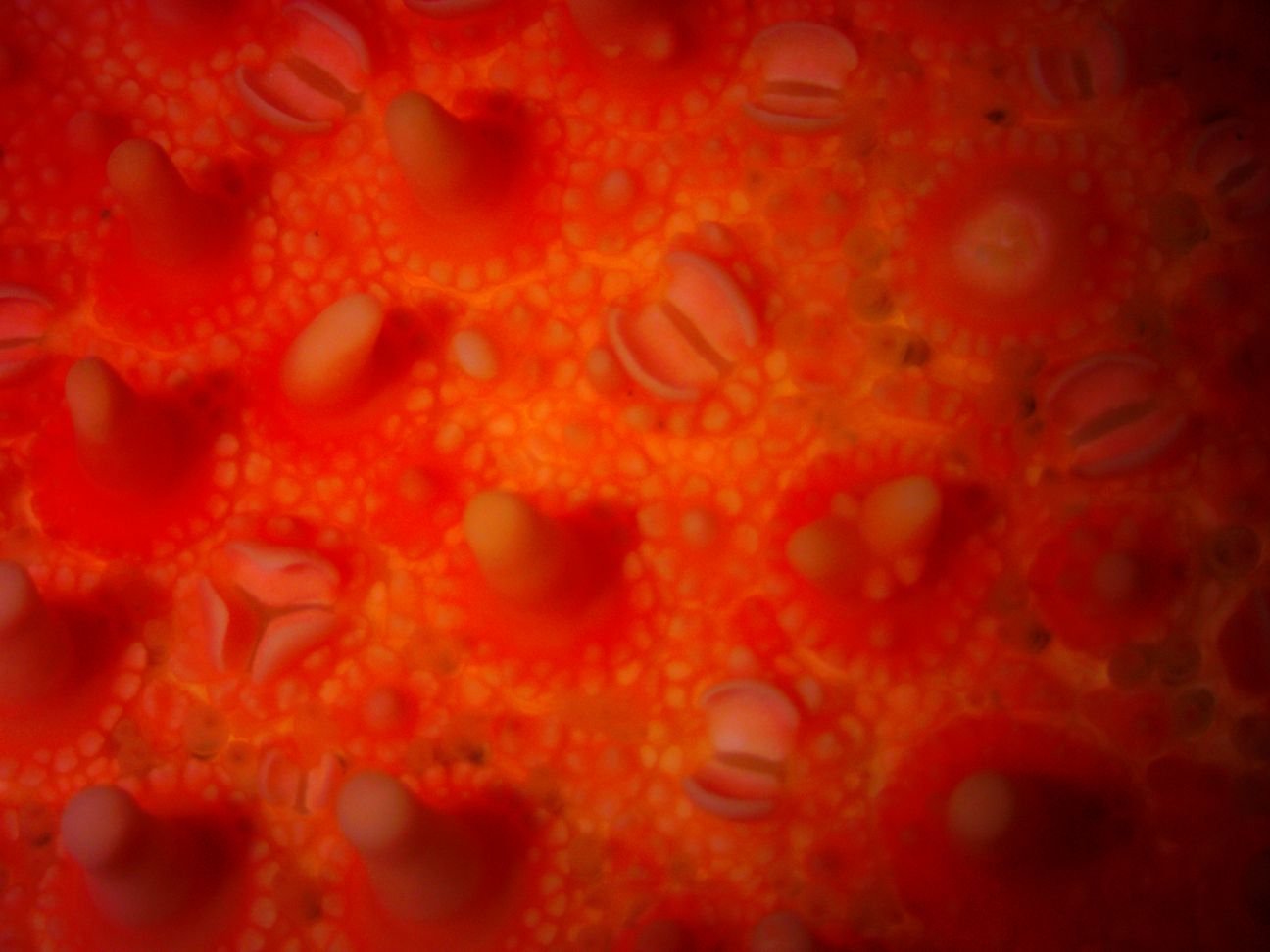
This view of the aboral
side shows the bi-valved pedicellariae
and one pedicellaria
which is tri-valved.
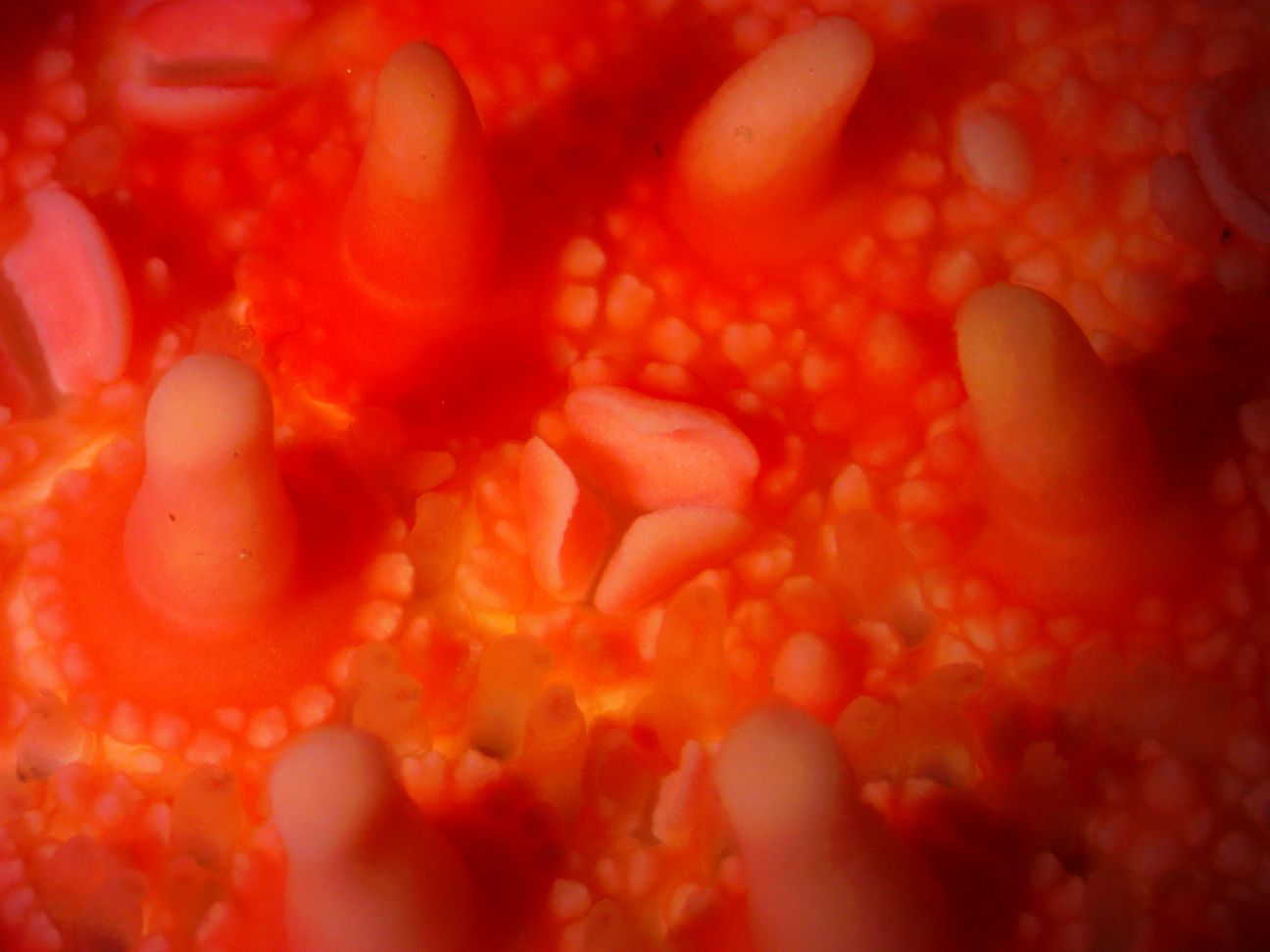
This stacked photo shows a closeup of the tri-valved pedicellaria
Authors and Editors
of Page:
Dave Cowles (2018): Created original page
CSS coding for page developed by Jonathan Cowles
Salish Sea Invertebrates web site provided courtesy of Walla
Walla University
